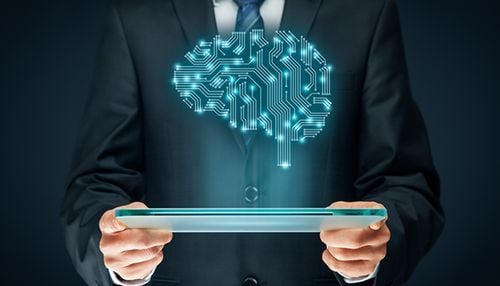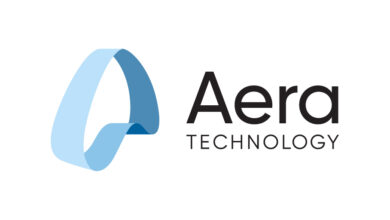Diving Into Generative AI: A Practical Guide For Law Firms Starting From Scratch

Image courtesy of NetDocuments.
AI tools have established themselves as a mainstay of legal technology, but determining the best way to incorporate generative AI into a legal workflow can be challenging — especially for firms who are just beginning to explore how to utilize the technology.
NetDocuments has spent the last year guiding clients through the process of implementing and even building out AI tools that match the unique needs of different practice areas and work styles.
This and her 40 years of legal experience allows Michelle Spencer, Lead Product Marketing Manager at NetDocuments, to offer recommendations regarding how attorneys can make the most of AI capabilities without experiencing some of the headaches that come with adopting a new and rapidly evolving tech tool. She shared several of those recommendations in a recent interview with Above the Law.
A Tech Adoption Like Any Other
While the tech innovations offered by generative AI shook the legal industry as a whole, NetDocuments’ experience with automation and machine learning proved to be a solid foundation upon which the organization could begin building more complex AI tools designed specifically for the legal space.
“One of the things we did early on was we started talking to people, knowing that OpenAI’s ChatGPT was going to be the biggest and best thing to start but also knowing that law firms have much greater confidentiality and privacy requirements than most businesses,” Spencer says.
Due to those requirements, consumer grade tools come with risks that negate using them for client work. Addressing those security concerns, being able to develop perfected reusable prompts, and easy access to precedent content with which to ground AI prompts are critical parts of the formula for success.
She sorts the AI-based tools available in the legal tech space into three broad categories based on the content access needed and problems to be solved: general business processes, legal research, and client work product and service. Improving meetings or calendaring is one thing, but if you’re trying to do client work, you need a tool suited for that work.
“Our product sits solidly in that client work product and service zone, and that’s why we were able to develop a formula for success for our customers leveraging their content stored in our platform,” she adds, referring to NetDocuments’ PatternBuilder MAX AI-enabled document and automation platform.
“Just like how legal research gives you access to legal precedents, your past work product gives you precedent for how you want things to look and what content needs to be extracted to best leverage that past work.”
What Can AI Do For You?
Spencer knows that the huge number of AI-based tools in the legal tech market can be daunting, especially for those leading the charge to implement AI tools in their own organization.
She suggests that rather than asking what AI is capable of, attorneys should start by asking what specific tasks or processes it might be the most beneficial to delegate to an AI tool in the context of their particular organization.
“Every firm does things slightly differently, and every jurisdiction has slightly different requirements,” Spencer notes, adding that knowledge of the wide variety of needs different attorneys motivated the NetDocuments product team to build in a high degree of customizability for the organization’s AI tool suite.
“We not only provide 9 (and counting) out of the box apps with broad functions, but we also have the toolkit to build your own apps or to customize those apps for a specific practice area or for your jurisdiction or clients,” she says.
“Specific clients have specific ways that they like things done, so you can tailor any of our out of the box apps or build your own that matches your specific process, preferences, and the needs that you have.”
How To Introduce AI Tools To Your Legal Work
According to Spencer, laying the groundwork for bringing AI tools to an organization is half the battle of implementation.
“Start with getting your safety nets together, getting people up to speed with the knowledge they need and getting policies in place to protect the firm — and the people from themselves,” she suggests.
“What are the accepted uses? The prohibited uses? What tools are okay to use? What tools are not okay to use? Really giving that guidance and then ensuring that when you do start testing tools, getting those guardrails in place like how your inputs and outputs are being used, where data is being stored, the data and privacy compliance framework.”
The good news for attorneys who are just beginning to dip their toes into the world of AI is that NetDocuments utilized its close relationship with Microsoft to build tools on the latter’s Azure OpenAI platform, which Spencer notes is well regarded for its security practices.
“Law firms trust and depend on Microsoft all day, every day, and that’s why our platforms already tightly integrate with all of the M365 products. It was just a natural fit for us and Microsoft,” she says.
Spencer also recommends that attorneys advocating for AI tools continue to listen to those in their organization who are wary of AI — especially if those hesitations are voiced by individuals who have a great deal of experience in the legal space.
“Trust the people who have been in legal for a long time who understand the industry really well and know the industry’s needs,” she says.
“There’s a lot of rushing to get this new thing or build this new thing, but you always have to take that step back with legal because there are so many potential issues around ethics and confidentiality and privacy.”
One issue that recently surfaced in the legal industry was the sensitive content review done by large language model providers, including Microsoft. Because much of the work done by lawyers includes sensitive content, NetDocuments took the extra step of getting their customer’s content excluded from this sort of review.
A Human-In-The-Loop Remains Essential
While AI technology has much to offer the legal space, Spencer emphasizes that the role of humans isn’t going away anytime soon.
“That’s something we will say all day, every day: there’s always going to need to be a human in the loop. We would never recommend that somebody use any AI tool on the market, no matter how good it is, without having a human review that output to confirm it’s what’s needed in each specific situation,” she says.
One way to maintain that human level of review, Spencer offers, is to make sure new attorneys learn how to complete essential processes without AI assistance. She cites the example of an immigration attorney who built a custom AI tool using the NetDocuments toolkit to complete the relevant forms for applying for an O-1 visa.
“He does not allow his associates to use the app that they’ve built until they’ve done the process ten times manually because he wants them to be able to understand how the process works and what things they should be looking for when they’re reviewing the AI output,” she explains.
Visit NetDocuments.com to learn more and schedule a demo. To explore how PatternBuilder Max can be leveraged for your practice area, click here.



